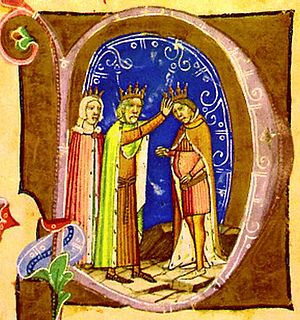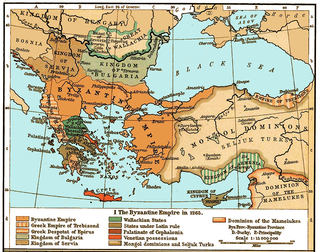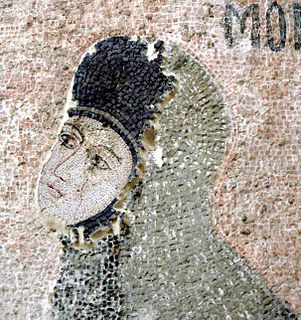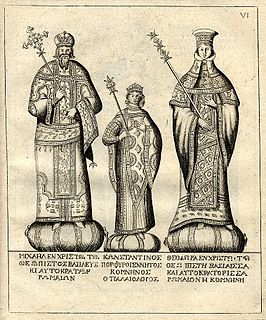 W
WTheodora Angelina was the wife of Leopold VI of Austria, by whom she had several children.
 W
WAnna of Hohenstaufen, born Constance, was an Empress of Nicaea. She was a daughter of Frederick II, Holy Roman Emperor and Bianca Lancia.
 W
WNiketas or Nicetas Choniates, whose actual surname was Akominatos (Ἀκομινάτος), was a Greek Byzantine government official and historian – like his brother Michael Akominatos, whom he accompanied to Constantinople from their birthplace Chonae. Nicetas wrote a history of the Eastern Roman Empire from 1118 to 1207.
 W
WJohn Komnenos Doukas, Latinized as Comnenus Ducas, was ruler of Thessalonica from 1237 until his death in 1244.
 W
WManuel Komnenos Doukas, Latinized as Ducas, commonly simply Manuel Doukas and rarely also called Manuel Angelos, was ruler of Thessalonica from 1230 to 1237 and, after his expulsion from Thessalonica, of Thessaly from 1239 until his death in c. 1241.
 W
WTheodore Komnenos Doukas was ruler of Epirus and Thessaly from 1215 to 1230 and of Thessalonica and most of Macedonia and western Thrace from 1224 to 1230. He was also the power behind the rule of his sons John and Demetrios over Thessalonica in 1237–1246.
 W
WJohn Gabalas was a Byzantine Greek magnate and hereditary ruler of the island of Rhodes in the 1240s. He lost control of the island to the Republic of Genoa in 1248, and called for aid from his suzerain, the Empire of Nicaea. Nicaean troops retook the island, but it was not restored to John's control, becoming a Nicaean province.
 W
WIrene Komnene Laskarina Branaina was a Byzantine noblewoman and wife of sebastokrator Constantine Palaiologos, half-brother of Byzantine Emperor Michael VIII Palaiologos. She seems to have followed suit after her husband's retirement to a convent, and taken the monastic name of Maria. She probably died as a nun.
 W
WMaria Komnene or Comnena was the second wife of King Amalric I of Jerusalem and mother of Queen Isabella I of Jerusalem.
 W
WMaria Laskarina was a Queen consort of Hungary by marriage to Béla IV of Hungary. She was the daughter of Theodore I Laskaris and Anna Komnena Angelina.
 W
WLicario, called Ikarios by the Greek chroniclers, was a Byzantine admiral of Italian origin in the 13th century. At odds with the Latin barons of his native Euboea, he entered the service of the Byzantine emperor Michael VIII Palaiologos, and reconquered many of the Aegean islands for him in the 1270s. For his exploits, he was rewarded with Euboea as a fief and rose to the rank of megas konostaulos and megas doux, the first foreigner to do so.
 W
WTheodore Mangaphas or Mankaphas was a nobleman from Philadelphia who assumed the title of Byzantine emperor twice, first during the reign of Isaac II Angelos, and secondly after the sacking of Constantinople during the Fourth Crusade.
 W
WMichael I Komnenos Doukas, Latinized as Comnenus Ducas, and in modern sources often recorded as Michael I Angelos, a name he never used, was the founder and first ruler of the Despotate of Epirus from c. 1205 until his assassination in 1214/15.
 W
WMichael II Komnenos Doukas, Latinized as Comnenus Ducas, often called Michael Angelos in narrative sources, was from 1230 until his death in 1266/68 the ruler of the Despotate of Epirus, which included Epirus in northwestern Greece, the western part of Greek Macedonia and Thessaly, and western Greece as far south as Nafpaktos.
 W
WMaria Palaiologina was the daughter of the Byzantine Emperor Michael VIII Palaiologos who became the wife of the Mongol ruler Abaqa Khan, and an influential Christian leader among the Mongols. After Abaqa's death she became the leader of a Monastery in Constantinople which was popularly named after her as Saint Mary of the Mongols. Her monastic name was Melanie.
 W
WTheodora Doukaina Komnene Palaiologina, usually known simply as Theodora Palaiologina, was the Empress consort of the Byzantine emperor Michael VIII Palaiologos.
 W
WConstantine Palaiologos or Palaeologus was a Byzantine nobleman and the younger half-brother of the Byzantine Emperor Michael VIII Palaiologos.
 W
WConstantine Doukas Komnenos Palaiologos was a Byzantine prince of the Palaiologos dynasty, who received the supreme title of Despot and served as provincial governor.
 W
WConstantine Palaiologos or Palaeologus was a Byzantine prince of the Palaiologos dynasty, who also served as a general in the wars against the Serbs and Turks.
 W
WLeo Sgouros, Latinized as Leo Sgurus, was a Greek independent lord in the northeastern Peloponnese in the early 13th century. The scion of the magnate Sgouros family, he succeeded his father as hereditary lord in the region of Nauplia. Taking advantage of the disruption caused by the Fourth Crusade, he made himself independent, one of several local rulers that appeared throughout the Byzantine Empire during the final years of the Angeloi dynasty. He expanded his domain into Corinthia and Central Greece, eventually marrying the daughter of former Byzantine emperor Alexios III Angelos. His conquests, however, were short-lived, as the Crusaders forced him back into the Peloponnese. Blockaded in his stronghold on the Acrocorinth, he committed suicide in 1208.
 W
WSimon the Athonite was a Greek Orthodox monk of the 13th century, later sanctified by the Eastern Orthodox Church as Saint Simon the Myroblyte.
 W
WTheodora Petraliphaina, canonized as Saint Theodora of Arta, was a consort of Epirus and an Orthodox Christian saint.